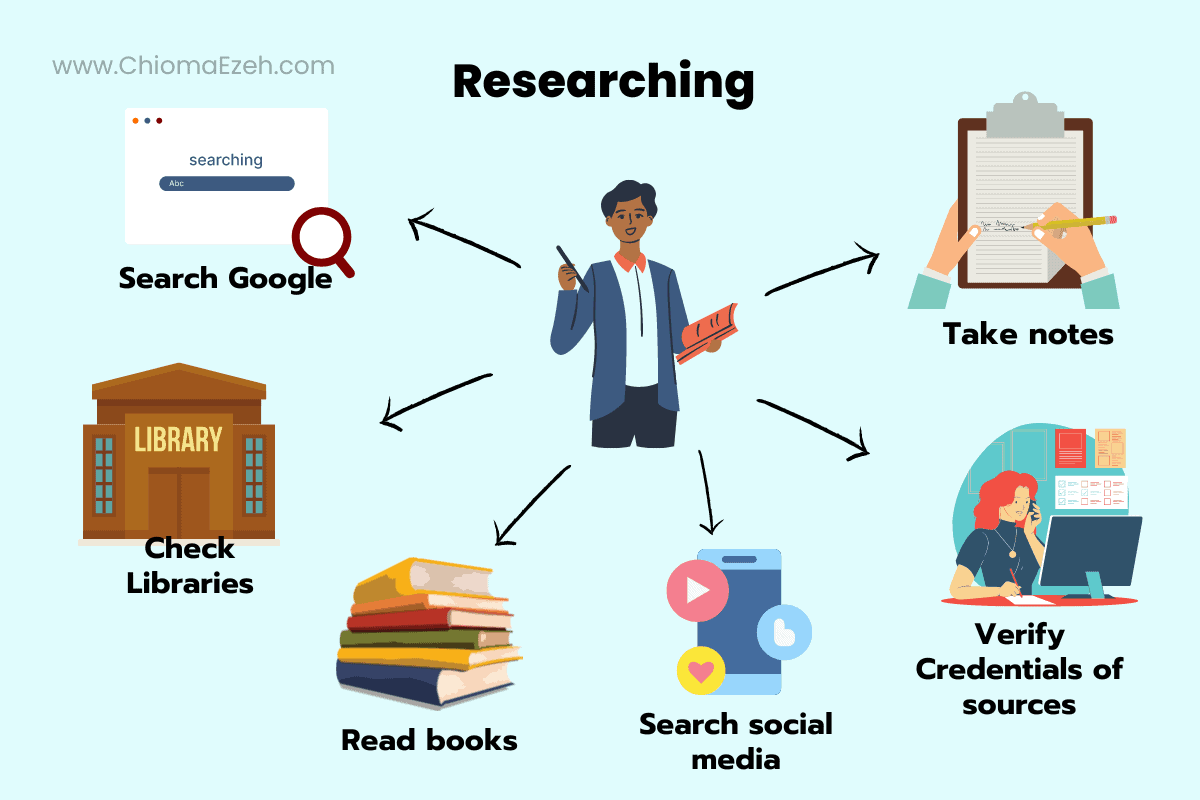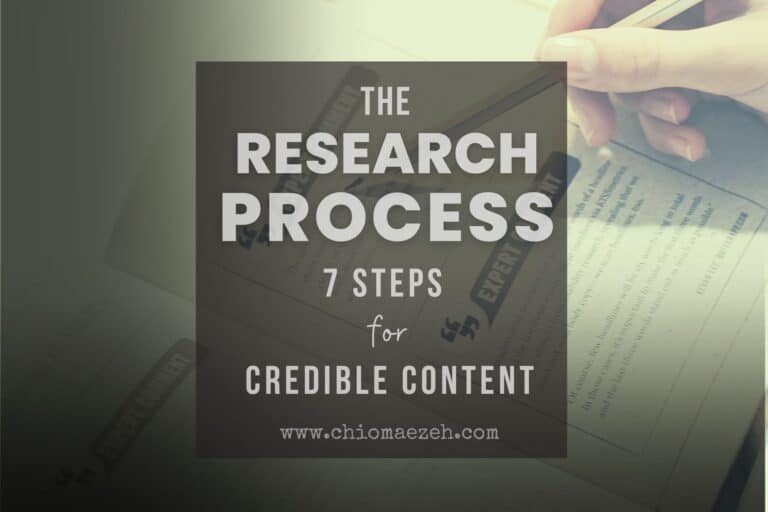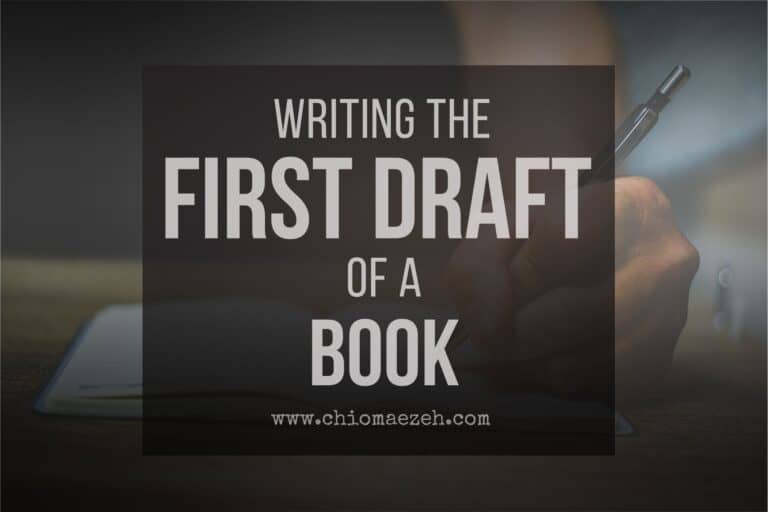Research Process Examples for Essays, Fictional Stories & Nonfiction
Research is a process of finding out more about something. It’s like when you are trying to solve a puzzle and you have to look for all the pieces before you can put it together. Researching involves asking questions, looking for answers, and then organizing your findings so that they make sense.
For example, if you wanted to learn more about birds, you could visit a library or search online for books on birds. You might also talk to an expert who knows a lot about birds or go outside and observe birds in their natural habitat.
In this post, we will look at some research process examples of topics and how we can carry out research for them.
👉 Don’t know where to start? See our comprehensive guide on Research process to get started!

Let’s Talk
Are you a writer aspiring to pen a masterpiece that never fails to captivate? Look no further. Reach out to us and uncover how we can help you to take your writing to unprecedented heights!

How To Carry Out Research
We can use several methods to carry out research. These methods systematically investigate a topic in order to gain information and knowledge. These can take various forms, but typically involve collecting, analyzing, and interpreting data to answer specific questions or hypotheses.
Common research process examples include surveys, interviews, experiments, observations, and content analysis. These are among the 6 types of the research process if you want to conduct research on a given topic.
Now, let’s take a look at some examples of topics ranging from nonfiction to fiction and essays.
👉 Want to learn more? See our article on the types of research methods in prewriting
Research Process Examples
Research Process Examples I: Fictional Horror Novel
Let’s assume you are writing a detailed piece on a horror novel titled “Manson’s Gory Claw”. Here is how you might conduct your research using the steps we just discussed:
1. Identify your research question: What is the theme of “Manson’s Gory Claw” and how does it reflect the horror genre?
2. Develop a research plan: To answer this question, I will read the book in detail and conduct interviews with experts in horror literature to determine what themes emerge from this novel and how they fit within the horror genre. I could look at the theme of my novel and try to compare it to other horror novels, both classic and modern. Also, I’ll try to research the settings – what makes this location the perfect place for a horror novel? Are there any specific elements of the setting that I need to research such as weather, flora, or fauna? Or maybe the narrative structure of the novel?
3. Gather your resources: I will need to use both primary sources (the book itself) and secondary sources (interviews with experts). I will also look at reviews of the book in order to get an outside perspective, as well as conduct my own research on horror literature from other books and articles. For example, if my book closely resembles the theme in classic horror novels such as Frankenstein, Dracula, and The Picture of Dorian Gray, I would look into them in order to see how the theme of “Manson’s Gory Claw” compare. If Dracula explores a theme of isolation and The Picture of Dorian Gray focuses on moral ambiguity, does my novel have elements of both?
4. Evaluate resources: To ensure all of my sources are credible, I will evaluate each source by looking into the author’s credentials and any potential biases they may have. The author of a reputable journal article, for example, should have some experience in the field of horror literature. I might specifically look at credentials like university degrees, awards, or publications, or even popularity.
I will also be mindful of potential biases when conducting interviews with experts – while they may provide helpful insights into the novel, their opinion is still subjective and could be influenced by their own personal experiences or interests.
5. Analyze your data: After reading the book and gathering my sources, I will analyze the information to find trends or patterns that may shed light on how this novel fits within the horror genre. This might include looking for common themes in other books in the same genre, noting any interesting characterizations, or analyzing how certain scenes are used to create suspense.
6. Draw conclusions: After gathering and analyzing my data, I will draw conclusions based on what I have found. What themes are present in the novel? How do they differ/compare to other horror novels? Are there any interesting elements of the setting that make this a great horror novel?
7. Present your findings: Finally, I can incorporate my findings as I write the first draft of my book. I can include a section on the themes present in the novel, what makes the setting effective, and how it ties into other horror literature. I could also add my own insights or commendations based on what I have discovered.
👉 Want ideas for your next horror story? See our list of 65 Horror story ideas
Research Process Examples II: Essay Writing
Let’s look at another research process example for an essay “Cancun’s Vacation Experience”. You might conduct your research this way below:
1. Define the research question: What are the most important features of Vacation Holiday experiences in Cancun, Mexico like? What makes it a memorable experience? What did travelers learn from their vacation holiday in Cancun, Mexico?
2. Gather resources: Interviews with people who have been on holiday there, reviews from travel websites and blogs, and photos from popular celebrities’ vacation albums.
3. Take notes: During the interviews, take notes on what they said about their experiences. When looking at online reviews, note any interesting observations made by travelers. As you look through the photos in celeb albums, make a list of the most memorable sights or activities.
4. Evaluate resources: Check if the reviews from travel websites are from verified users or anonymous authors. Make sure to check the credentials of any person you interview, and try to look for any potential biases they may have in their answers.
5. Analyze your data: After noting down all your observations and findings, analyze them and look for patterns or trends that can help answer your research question.
6. Draw conclusions: Based on your analysis, draw your conclusions and present them in a meaningful way. Make sure to include any relevant graphs, charts, or diagrams that help explain your findings. Explain the importance of your research and its implications for future study.
7. Present your findings: Now it’s time to present your findings. This can be done in a number of ways, from writing up your book or research report to giving an oral presentation. The aim should be to clearly communicate the results of your research and make recommendations based on what you have discovered.
Research Process Examples III: Fictional Fantasy Novel
Let’s take a look at another one of our research process examples for a fictional fantasy novel. Let’s title this “The Crimson Sword”.
Again, here you might conduct your research in the following manner:
1. Formulate a research question: What themes are explored in “The Crimson Sword”, and how does the author use them to explore social issues?
2. Gather resources: Look for relevant books, articles and interviews from scholars who specialize in fantasy literature. Find reviews of the novel, conduct interviews with experts, and even look at interviews with the author.
3. Evaluate resources: Compare articles from different sources to make sure they are accurate and relevant. Read through reviews of the book to get an idea of what critics think about it and consider the potential biases of any sources you come across.
4. Analyze your data: Look at quotes from the text and consider which themes the author is exploring. Compare these themes to those explored in other fantasy novels and draw conclusions based on your analysis. Create visual representations such as graphs or charts to illustrate your findings.
5. Draw conclusions: Summarize your findings by clearly stating how “The Crimson Sword” explores social issues and provides an explanation of the importance of your research.
6. Present findings: Once you have completed your research, present your findings in a meaningful way, such as writing up a formal report or paper or giving an oral presentation. Provide evidence to back up your conclusions and make recommendations based on what you have discovered.
👉 Want ideas for a fantasy story? See our list of Fantasy story ideas
Research Process Examples IV: Non-Fiction
Let’s consider a book on “The Impact Of Commercial Agriculture On Health Choices Of Americans”. We are going to research this piece this the following way:
1. Identify the research question: What are the implications of commercial agriculture on health choices of Americans?
2. Gather resources: You could start by looking for relevant studies, articles, and books in libraries and online databases such as PubMed or Google Scholar. You can also talk to experts who have conducted research in the field or look for surveys and interviews related to the topic. These could include studies about the cost of healthy food, how access to supermarkets affects health decisions or research into dietary choices in rural communities.
3. Evaluate resources: After gathering your sources, it is important to evaluate them for accuracy and relevancy in relation to your research question. What are the credentials of the authors or researchers? Are the sources from reliable institutions? Is the data you have gathered recent and up to date? For example, I could specifically watch look out for credentials like if the author is from a medical or nutritional research background and/or has they published any relevant studies.
4. Analyze your data: This involves looking for patterns or trends that could help answer your research question. For this example, you could look at data on the availability of healthy food options in different regions, or you might compare prices of organic and non-organic food items. Alternatively, you could analyze qualitative data like survey results or interviews and perform a thematic analysis to look for repeated themes or patterns in the responses.
5. Draw conclusions: Once you have analyzed your data, it is time to draw your conclusions. Here you can summarize the key findings of your research and provide evidence to back up your conclusions. You should also discuss the implications of your findings and suggest ways that policymakers or other stakeholders could address emerging issues uncovered in your study.
6. Present your findings: Finally, present your findings in a way that captures the attention of your audience. You could write up a detailed report, or create a presentation with graphs and charts to illustrate your key findings.
👉 Want to practice and hone your research skills? Use our list of helpful exercises to get yourself equipped!
Research Process Examples V: Non-Fiction
Imagine another one of our research process examples on the nonfiction topic “How to lose weight.” Use the steps below to carry out the research:
1. Identify the research question: What are some practical ways to lose weight?
2. Gather resources: Read books, articles, and journals on nutrition, dieting, and exercise; interview health professionals such as doctors or registered dietitians; review scientific studies related to weight loss strategies.
3. Research materials: The Internet, scientific journals, health books from the library, and interviews with experts.
4. Evaluate resources: Check for the credibility of authors, look for potential biases in the sources, and assess relevance to your research question.
5. Analyze data: Look for patterns or trends related to weight loss strategies; use quantitative analysis to analyze numerical data; use qualitative analysis to interpret textual data or interview results; create visual representations of data such as graphs, charts, and diagrams.
6. Draw conclusions: Summarize your findings and explain the implications of your research for future study.
7. Present findings: Write up a report or paper, give an oral presentation, and create visuals to explain your research.
👉 What next after research? Learn brainstorming techniques to hone in on your prewriting skills






